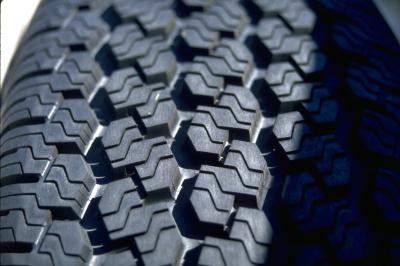
Take your car or truck to the next level and upgrade your tires. Besides enhancing the exterior of your car or truck, larger tires also improve performance by giving your vehicle a better grip on the road. When selecting and installing new tires, use the stock tires for your vehicle. The stock tires will help you make the best purchase for your vehicle in reference to the size and style of the upgraded tires. New wheels may not be necessary, as stock wheels may accommodate upgraded tires.
Research vendors. Complete an online search to find vendors and trade magazines featuring larger tires. Become familiar with the most popular brands featured in magazines before selecting new tires.
Retrieve the measurements of the stock tires the manufacturer included when the car was first purchased. Refer to the Owner's Manual for your specific model. Use the measurements to guide you in your tire purchase.
Use the jack to lift the tires from the ground slightly.
Remove the lug nuts and bolts with a four-way wrench to begin installing the new tires.
Check the fit of the updated tires on the wheels of the vehicle. If required, use a centering ring to ensure the fit.
Install the lug nuts and bolts without the wheel to verify that the lug nuts and bolts included with the updated wheels and tires match.
Install the wheel by threading the lugs with your fingers. Do not torque the wheel in this step.
Turn each wheel, making sure the outer edge of the disc brake caliper doesn't touch the touch the inside rim and that the caliper doesn't make contact with the back of the wheel.
Torque the wheel lugs to the recommended specifications. Use the four-way wrench to torque the wheels.